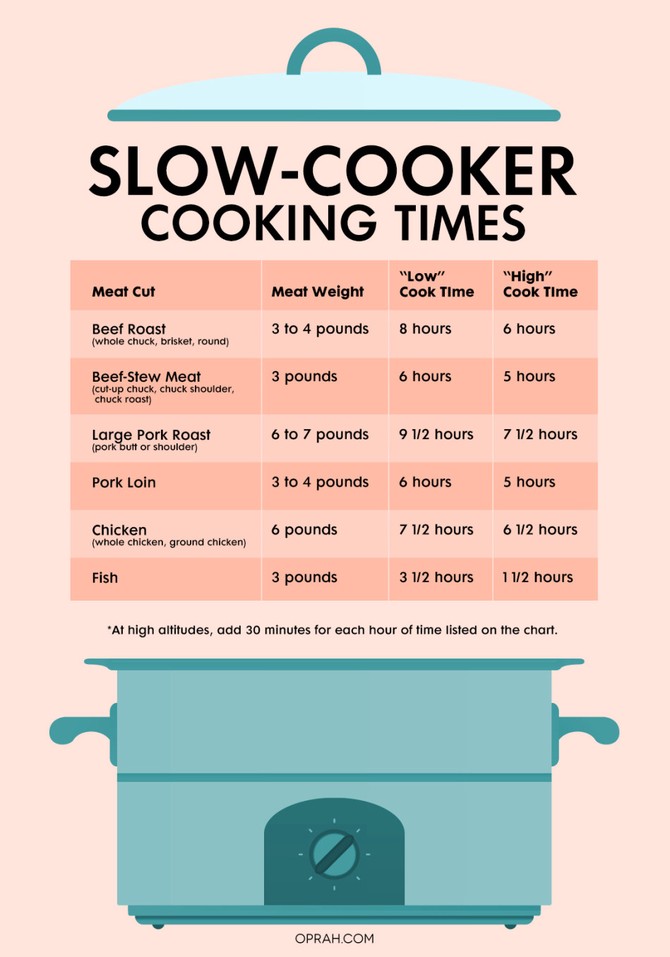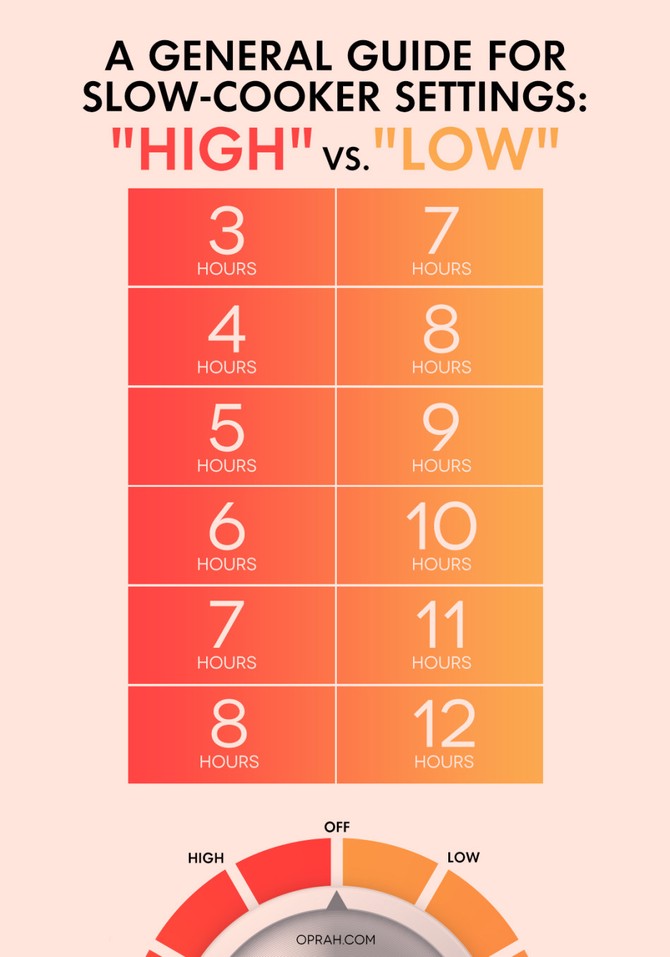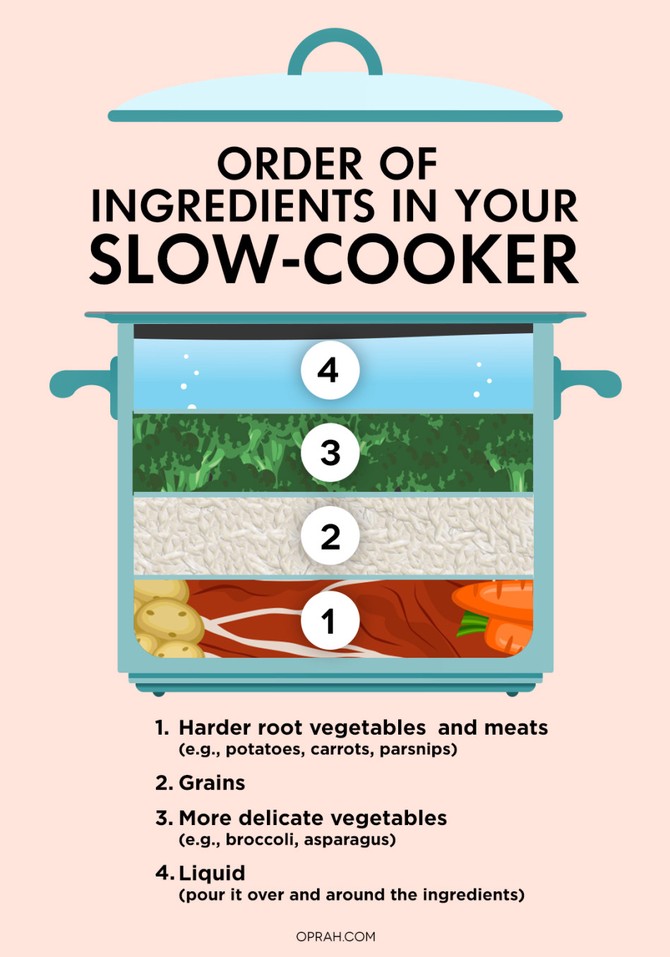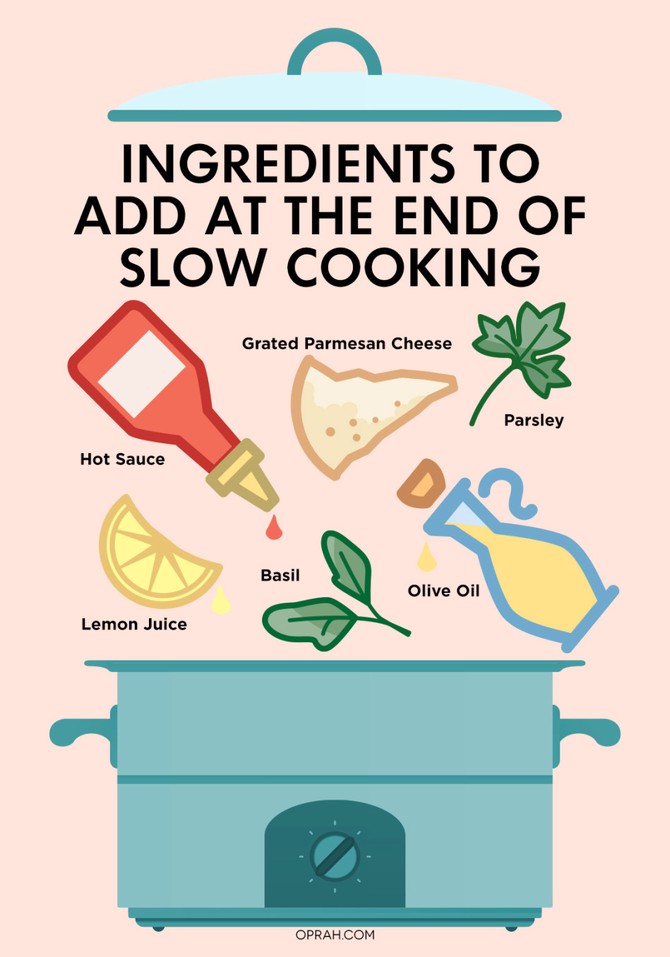With These Charts, You Can Cook Anything in a Slow Cooker
From helping you figure out how long to cook a pork roast to letting you know when to switch between "High" and "Low," these cheat sheets answer all your slow-cooker questions.
By Lynn Andriani

Illustration: Lisa Greene
1. How Long Should I Cook It?
Most slow cookers have just two settings: "Low" and "High" (if only everything in life were so simple). When time allows, we prefer to use "Low," since food tends to cook better on the more gentle heat over a longer period of time. But if you're time-pressed, go ahead and use "High"; slow cookers are pretty forgiving. Just remember that variables such as the meat's fat content and density, the amount of liquid, the size and type of the vegetables and the quantity of food will all affect the cooking time, so these times are approximate.
Get printable chart here
Get printable chart here

Illustration: Lisa Greene
2. How Do I Convert Cooking Time from "High" to "Low"?
The difference between "High" and "Low" on slow cookers seems to differ with every brand and model. One thing that is consistent, though, is that food takes seven to eight hours to reach a simmer point (around 210°) on low; versus three to four hours on high. A general rule of thumb from Luis Sanchez, senior category manager for the appliance manufacturer Breville: To go from "High" to "Low" (or vice versa), multiply (or divide) the original time by 1.5 to 2.5 hours. And as with the cooking times for specific ingredients, these times are approximate.
Get printable chart here
Get printable chart here

Illustration: Lisa Greene
3. How Do I Layer the Ingredients?
Here's one instance where a tiny bit of fussiness actually pays off. Foods that are at the very bottom of your slow cooker will be closest to the heating element; while those on top will be farther away, so putting the ingredients into the pot in the right order will affect how they cook.
Get printable chart here
Get printable chart here

Illustration: Lisa Greene
4. What Should I Add at the Very End?
Finishing touches can add brightness, heat, richness and other elements to your dish. Wait until the very end to stir them in, though, since some herbs will fall apart if they're cooked for hours, while citrus' zesty flavor will be muddled after too long.
Get printable chart here
Get printable chart here
Published 11/30/2016

